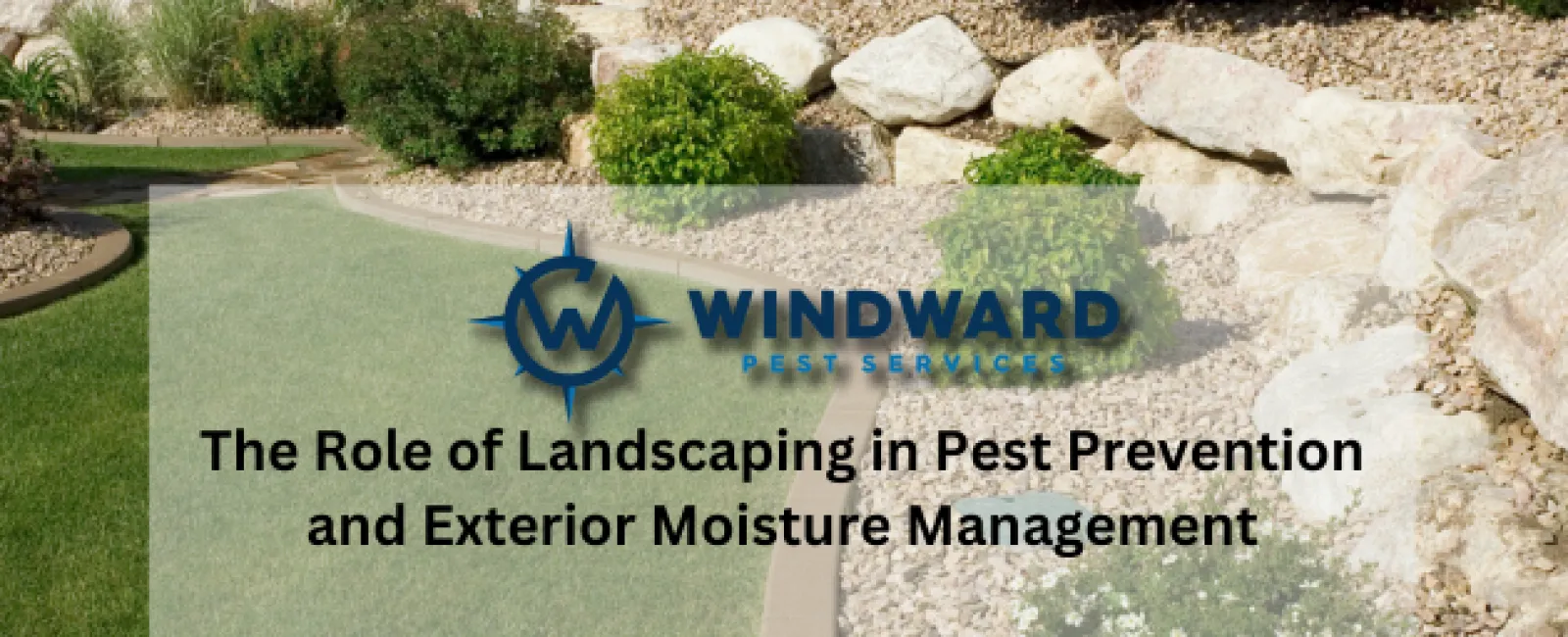In the realm of commercial pest control, Atlanta, GA stands as a bustling hub where businesses thrive amidst a dynamic urban landscape. However, this vibrant environment brings forth a unique set of challenges, foremost among them being the effective management of pests. As businesses expand and urban areas develop, the risk of pest infestations escalates, necessitating diligent pest inspections and preventive measures. These inspections are not only crucial for regulatory compliance but also serve as a fundamental aspect of maintaining a safe and healthy environment for employees and customers alike.
Despite its importance, landscaping and exterior moisture management often remain overlooked facets of pest prevention strategies. Yet, they are pivotal in creating a formidable defense against pests and ensuring sustainable pest control practices. In this article, we delve into the multifaceted role landscaping plays in not only enhancing the aesthetics of commercial properties but also in fortifying them against pest intrusion, while simultaneously managing exterior moisture effectively to mitigate pest-friendly environments.
Understanding the Importance of Pest Prevention
Pests pose a significant threat to businesses, ranging from health hazards to property damage. Rodents, insects, and other pests not only create unsanitary conditions but also harm a company's reputation. For industries such as food service and hospitality, the presence of pests can lead to severe consequences, including fines and closure. Therefore, proactive pest prevention measures are essential.
The Nexus Between Landscaping and Pest Prevention
Landscaping goes beyond enhancing the aesthetic appeal of a property; it serves as a frontline defense against pests. By strategically designing and maintaining outdoor spaces, businesses can create barriers that deter pests from entering the premises. Here's how landscaping contributes to pest prevention:
- Vegetation Management. Overgrown vegetation provides ideal hiding spots and breeding grounds for pests. Regular trimming of bushes, shrubs, and trees not only improves the appearance of the landscape but also eliminates potential habitats for rodents and insects. Moreover, keeping plants away from the building's exterior prevents pests from gaining easy access indoors.
- Mulching Practices. While mulch offers numerous benefits such as moisture retention and weed suppression, improper mulching can attract pests. Mulch that is too thick or placed too close to the building provides hiding places for pests like termites and ants. Using inorganic mulch or applying a gravel barrier along the foundation can mitigate this risk.
- Water Management. Standing water is a magnet for pests, particularly mosquitoes and flies. Proper drainage systems and regular inspection of irrigation systems are essential to prevent water accumulation on the property. Additionally, fixing leaks and ensuring that gutters and downspouts are clear prevents moisture from seeping into the building's structure, which can attract pests like cockroaches and termites.
- Natural Pest Control. Strategic planting of pest-repelling plants can help deter insects and other pests. For example, marigolds repel aphids, mosquitoes, and even rabbits, while lavender deters fleas, moths, and mice. Incorporating these plants into the landscape not only adds beauty but also serves as a natural pest control method, reducing the need for chemical pesticides.
- Integrated Pest Management (IPM). IPM is a holistic approach to pest control that emphasizes prevention and minimizes the use of pesticides. Landscaping plays a crucial role in IPM by creating a habitat that encourages natural predators of pests, such as birds and beneficial insects. By fostering a balanced ecosystem, businesses can reduce their reliance on chemical treatments while effectively managing pest populations.
Exterior Moisture Management: A Key Component of Pest Prevention
In addition to landscaping, effective moisture management is paramount in pest prevention efforts. Moisture attracts pests like termites, ants, and cockroaches, as it provides them with the ideal conditions for nesting and breeding. Beyond the immediate vicinity of the building, stagnant water in outdoor areas can also contribute to pest problems. Puddles in parking lots, poorly drained flower beds, and unchecked irrigation systems can all create environments conducive to pest infestations. Therefore, businesses must extend their moisture management efforts beyond the building's perimeter to encompass the entire property. Here's how businesses can manage exterior moisture to mitigate pest infestations:
- Building Maintenance. Regular inspection and maintenance of the building's exterior are crucial in identifying and addressing moisture issues. Cracks in the foundation, gaps around doors and windows, and damaged siding can allow moisture to penetrate the building, creating conducive conditions for pests. Sealing these entry points and repairing any structural damage is essential in moisture management.
- Proper Ventilation. Ensuring adequate ventilation in crawl spaces, attics, and basements helps prevent moisture buildup. Proper airflow helps dry out damp areas, reducing the likelihood of mold growth and deterring pests that thrive in humid environments.
- Landscape Grading. Proper grading of the landscape directs water away from the building's foundation, preventing pooling and seepage. Sloping the ground away from the structure ensures that rainwater drains effectively, reducing the risk of moisture-related issues that attract pests.
- Waterproofing. Applying waterproof coatings to exterior surfaces such as walls and decks adds an extra layer of protection against moisture intrusion. Waterproofing products seal porous materials, preventing water from seeping into the building and creating conditions conducive to pest infestations.
- Drainage Systems. Installing and maintaining effective drainage systems, including gutters, downspouts, and French drains, is essential in managing exterior moisture. These systems redirect rainwater away from the building, preventing water accumulation near the foundation and reducing the risk of moisture-related pest problems.
In the world of commercial pest control, Atlanta businesses must prioritize proactive pest prevention measures to safeguard their operations and reputation. With the city's diverse urban landscape and subtropical climate, the challenges posed by pests are ever-present. Landscaping and exterior moisture management play integral roles in these efforts, as they address not only current pest issues but also prevent future infestations from taking root. By adopting a holistic approach that integrates landscaping practices such as vegetation management and natural pest control with effective moisture management strategies like proper grading and drainage systems, businesses can mitigate pest risks comprehensively. This proactive stance not only ensures a pest-free environment for employees and customers but also demonstrates a commitment to environmental sustainability and responsible business practices.

